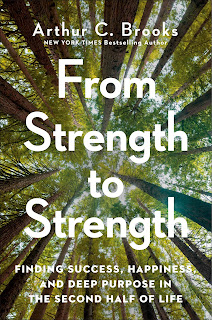Decide, Plan, And Take Action
Decision-making is a complex and multifaceted process that combines rational thinking with emotions, biases, and environmental factors. Understanding the intricacies of how we make decisions can empower us to become better planners and decision-makers in both our personal and professional lives.
At its core, decision-making involves gathering information, evaluating options, and choosing the best course of action. However, numerous factors influence this process, often leading to choices that may not always align with our best interests. From cognitive biases to social pressures, our decisions are shaped by a myriad of internal and external forces.
One key aspect of decision-making is the role of emotions. While we like to believe that our choices are driven solely by logic, emotions play a significant role in shaping our preferences and influencing our decisions. Whether it's fear, excitement, or desire, emotions can cloud our judgment and lead us down unexpected paths.
Furthermore, cognitive biases*, such as confirmation bias* and anchoring*, can distort our perception of reality and hinder our ability to make sound decisions. These biases cause us to favor information that confirms our existing beliefs and to rely too heavily on initial pieces of information when evaluating options.
Despite these challenges, there are steps we can take to improve our planning and decision-making skills:
1. Seek diverse perspectives: Actively seek out different viewpoints and consider alternative perspectives before making a decision.
2. Gather reliable information: Take the time to gather accurate and relevant information from credible sources to inform your decisions.
3. Evaluate risks and benefits: Assess the potential risks and benefits of each option objectively, weighing the potential outcomes.
4. Practice mindfulness: Cultivate awareness of your thoughts and emotions to prevent them from clouding your judgment during decision-making.
5. Set clear goals: Define clear goals and priorities to guide your decision-making process and ensure alignment with your objectives.
6. Utilize decision-making frameworks: Familiarize yourself with decision-making frameworks such as cost-benefit analysis* or SWOT* analysis to structure your thinking.
7. Consider long-term consequences: Think beyond immediate gratification and consider the long-term implications of your decisions on yourself and others.
8. Embrace uncertainty: Acknowledge that not all decisions will have clear-cut answers and be prepared to navigate ambiguity.
9. Learn from past experiences: Reflect on past decisions and their outcomes to identify patterns and learn from both successes and failures.
10. Seek feedback: Solicit feedback from trusted peers or mentors to gain insight into your decision-making process and identify areas for improvement.
In the face of uncertainty and complexity, it's essential to approach decision-making with resilience, adaptability, and a growth mindset. By honing our planning and decision-making skills, we can navigate life's challenges with greater confidence and clarity.
Remember, every decision we make shapes our journey and contributes to our growth and development. So, embrace the process, trust your instincts, and dare to step outside your comfort zone. The power to shape your future lies in your hands.
Take the first step towards becoming a better planner and decision-maker today. Challenge yourself to apply one of the strategies mentioned above in your next decision-making process, and witness the positive impact it can have on your life.
Together, let's unlock the mysteries of human decision-making and empower ourselves to create a brighter, more fulfilling future.
*(Cognitive Biases:
Cognitive biases are systematic patterns of thinking that lead to deviations from rational judgment or decision-making. These biases can affect our perception, memory, and decision-making processes, often leading us to make errors in judgment or draw incorrect conclusions. Cognitive biases can arise from various factors, including heuristics (mental shortcuts), emotional influences, and social pressures.)
*(Confirmation Bias:
Confirmation bias is the tendency to search for, interpret, favor, and recall information in a way that confirms one's preexisting beliefs or hypotheses while disregarding or downplaying contradictory evidence. This bias can lead individuals to seek out information that aligns with their existing views, ignore information that contradicts them, and interpret ambiguous evidence in a way that supports their beliefs. Confirmation bias can reinforce existing beliefs and hinder the ability to objectively evaluate new information.)
*(Anchoring Bias:
Anchoring bias is the tendency to rely too heavily on the first piece of information encountered (the "anchor") when making decisions or judgments, even if that information is irrelevant or misleading. Once an anchor is established, subsequent judgments or decisions are often adjusted around this initial reference point. Anchoring bias can lead individuals to overvalue or undervalue certain information, resulting in decisions that are biased toward the initial reference point.)
*(A cost-benefit analysis is a systematic process used to compare the costs of an action or decision with the expected benefits. It involves quantifying both the positive outcomes (benefits) and negative consequences (costs) associated with a particular course of action, project, or investment. By weighing the potential costs against the anticipated benefits, decision-makers can determine whether the benefits outweigh the costs and whether the proposed action is economically justified. Cost-benefit analyses are commonly used in business, economics, public policy, and project management to evaluate the financial feasibility and desirability of various options and inform decision-making but it can also be used in our personal lives to make decisions.)
*(A SWOT analysis is a strategic planning tool used to evaluate the Strengths, Weaknesses, Opportunities, and Threats associated with a particular project. It involves identifying internal factors (Strengths and Weaknesses) such as resources, capabilities, and limitations, as well as external factors (Opportunities and Threats) such as market trends, competition, and regulatory changes. By assessing these factors, organizations can gain insights into their current position, identify areas for improvement, and develop strategies to capitalize on opportunities and mitigate potential threats. (SWOT analyses are commonly used in business strategy, marketing, and project management to inform decision-making and enhance strategic planning efforts but a SWOT analysis can also be used in our personal lives when we are deciding what direction we want to take to accomplish certain goals.)
Brought to you by The Simplicity Lifestyle




Comments
Post a Comment